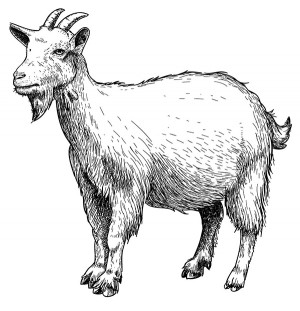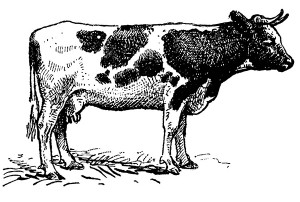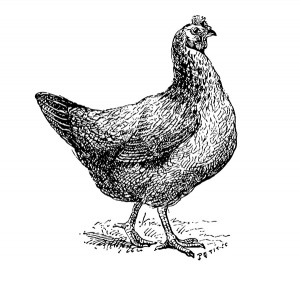
Illustrations by Stacey Rozich
Goat
If you fancy goat meat, Atwood Village Family Farm is the go-to, grazing Nubian and Cashmere breeds on six of its 25 acres in Independence. Each goat is castrated at two months, before they become sexually mature, ensuring the lean meat has a sweet taste (similar to bison) that isn’t gamy. Available May through September (roughly), Atwood sells everything from shoulder and leg roasts to rib racks, tenderloins, and ground meat. Markets: DCCH Farmers’ Market of Ft. Mitchell
 Beef
Beef
Easter Rising Farm in Friendship, Indiana, is raising “salad bar beef,” a term coined by farmer and author Joel Salatin. It’s a method of raising beef cattle on only tall, grassy vegetation (bluegrass, alfalfas, pigweed, etc.), which provide Omega-3s—a.k.a. “good” fatty acids—giving them the balanced, well-marbled quality of corn-fed cows. In other words, the best grass-fed beef money can buy. Available through CSA to Madeira and Western Hills; easterrisingfarm.com
 Pork
Pork
Finn Meadows Farm in Montgomery processes roughly 55 hogs a year, raising low-stress heritage breeds such as Duroc, Berkshire, and even some hybrid Red Wattle boars. The hogs spend spring through fall grazing the pasture (moved every nine days to fresh grass) and are supplemented with non-GMO whole grains. Spring and fall butcherings yield about 10,000 pounds of meat, including everything from whole and half hogs to bacon, sausage, and chops. Markets: Hyde Park
 Chicken
Chicken
Webb Valley Farm raises Cornish Rock Cross Hens—the same birds used by the likes of Tyson and Perdue, except that the Wilmington farm uses only organic feed. Kept inside and under light for two weeks after hatching to stay warm, the chickens are then put out to pasture in 10-by-12-foot covered cages, which are moved twice a day to fresh grass. Harvests in July and September produce about 250 birds each, sold whole and by pre-order only. Available for pickup at the farm
 Lamb
Lamb
Mud Foot Farm in Amelia raises Katahdin-Dorper and four other breeds of sheep on management-intensive grazing, moving the flock to different areas around the farm’s 40-acre pasture every few days. The farm processes anywhere from 25 to 50 ovines each year near the end of summer (the number varies based on how many twins they have in a given season), and always before they reach nine months of age. Each lamb gets butchered at a proper USDA-inspected facility before being sold in cuts ranging from chops and shanks to livers and hearts. Markets: Northside




Facebook Comments